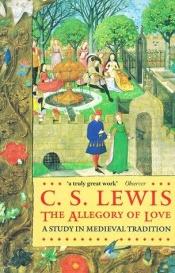The Allegory of Love
Blurb
The Allegory of Love: A Study in Medieval Tradition, by C. S. Lewis, is an influential exploration of the allegorical treatment of love in the Middle Ages and the Renaissance.In the first chapter, Lewis traces the development of the idea of courtly love from the Provençal troubadours to its full development in the works of Chrétien de Troyes. It is here that he sets forth a famous characterization of "the peculiar form which it [courtly love] first took; the four marks of Humility, Courtesy, Adultery, and the Religion of Love"—the last two of which "marks" have, in particular, been the subject of a good deal of controversy among later scholars. In the second chapter, Lewis discusses the medieval evolution of the allegorical tradition in such writers as Bernard Silvestris and Alain de Lille.
The remaining chapters, drawing on the points made in the first two, examine the use of allegory in the depiction of love in a selection of poetic works, beginning with the Roman de la Rose. The focus, however, is on English works: the poems of Chaucer, Gower's Confessio Amantis and Usk's Testament of Love, the works of Chaucer's epigones, and Spenser's Faerie Queene.

 English
English Español
Español Deutsch
Deutsch
Member Reviews Write your own review
Be the first person to review
Log in to comment